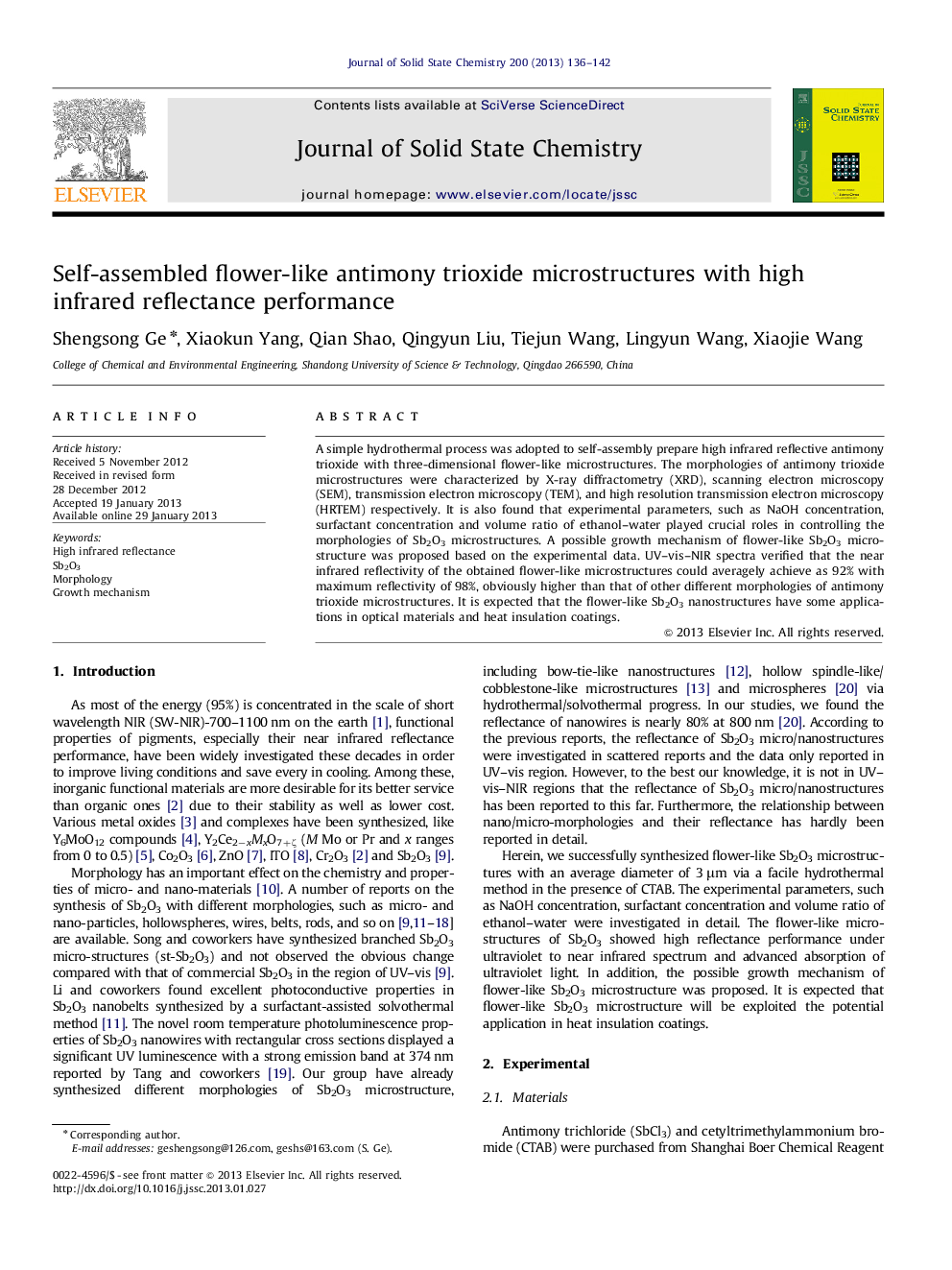| Article ID | Journal | Published Year | Pages | File Type |
|---|---|---|---|---|
| 1331201 | Journal of Solid State Chemistry | 2013 | 7 Pages |
A simple hydrothermal process was adopted to self-assembly prepare high infrared reflective antimony trioxide with three-dimensional flower-like microstructures. The morphologies of antimony trioxide microstructures were characterized by X-ray diffractometry (XRD), scanning electron microscopy (SEM), transmission electron microscopy (TEM), and high resolution transmission electron microscopy (HRTEM) respectively. It is also found that experimental parameters, such as NaOH concentration, surfactant concentration and volume ratio of ethanol–water played crucial roles in controlling the morphologies of Sb2O3 microstructures. A possible growth mechanism of flower-like Sb2O3 microstructure was proposed based on the experimental data. UV–vis–NIR spectra verified that the near infrared reflectivity of the obtained flower-like microstructures could averagely achieve as 92% with maximum reflectivity of 98%, obviously higher than that of other different morphologies of antimony trioxide microstructures. It is expected that the flower-like Sb2O3 nanostructures have some applications in optical materials and heat insulation coatings.
Graphical abstractFlower-like Sb2O3 microstructures that composed of nanosheets with thickness of ca. 100 nm exhibit high reflectivity under UV–vis–NIR spectra.Figure optionsDownload full-size imageDownload as PowerPoint slideHighlights► Uniform flower-like microstructures were synthesized via simple hydrothermal reaction. ► The flower-like Sb2O3 microstructures exhibited higher reflectivity than other morphologies under the UV–vis–NIR light. ► Influencing parameters on the Sb2O3 morphologies have been discussed in detail. ► Possible mechanism leading to flower-like microstructures was proposed.
